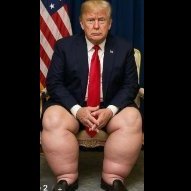Understanding How Gold Jewelry Is Sold In Thailand
-
Recently Browsing 0 members
- No registered users viewing this page.
Announcements
-
Topics
-
-
Popular Contributors
-
-
Latest posts...
-
36
TM30 password nonsense
Agree that's it's a silly requirement however your place of accommodation can provide TM30. And give you print out. -
98
Here we go
You are just a typical lying leftist that is unable to put together a coherent response, so you just regurgitate the same idiocy over and over. While I have seen clips from time to time, I do not now, nor have I ever watched Fox news. -
6
U.S. alcohol consumption hits near-100 year low
Maybe for older people that boozed it up through much of their lives (including me) and smoked a lot when younger. Not sure anyone can predict life expectency would be falling for those in their 20s that don't drink or smoke - unless they have really bad diets, obese, etc. -
35
Transport Thailand's High-Speed Rail Bidding Opens for 2026
Thanks for sharing. That VO grated though. -
4
Racial tensions high in Cincinnati as 7th brawl suspect arrested
And this is what three of the big U.S. TV networks WEREN'T saying: Nothing to See Here: Networks Ignore Disturbing, Viral Brawl in Cincinnati Given the victims appeared to be white and the mob black, ABC, CBS, and NBC have steered clear given the clear racial breakdown and not given it a single second on their flagship morning or evening newscasts. In contrast, the Fox News Channel, Newsmax, and NewsNation recognized the seriousness of this story, providing multiple segments since video went viral. https://newsbusters.org/blogs/nb/curtis-houck/2025/07/30/nothing-see-here-networks-ignore-disturbing-viral-brawl-cincinnati It's a perfect example of "woke" ideology in action. A consistent claim from "woke" critics has been U.S. media gives too much prominence to Black crime, especially when the victims are white. -
36
TM30 password nonsense
The regulations say 1600 but 800 is the common fine. The bigger issue is that they often will not provide whatever service it is you are seeking until you complete the TM30.
-
-
Popular in The Pub









Recommended Posts
Create an account or sign in to comment
You need to be a member in order to leave a comment
Create an account
Sign up for a new account in our community. It's easy!
Register a new accountSign in
Already have an account? Sign in here.
Sign In Now